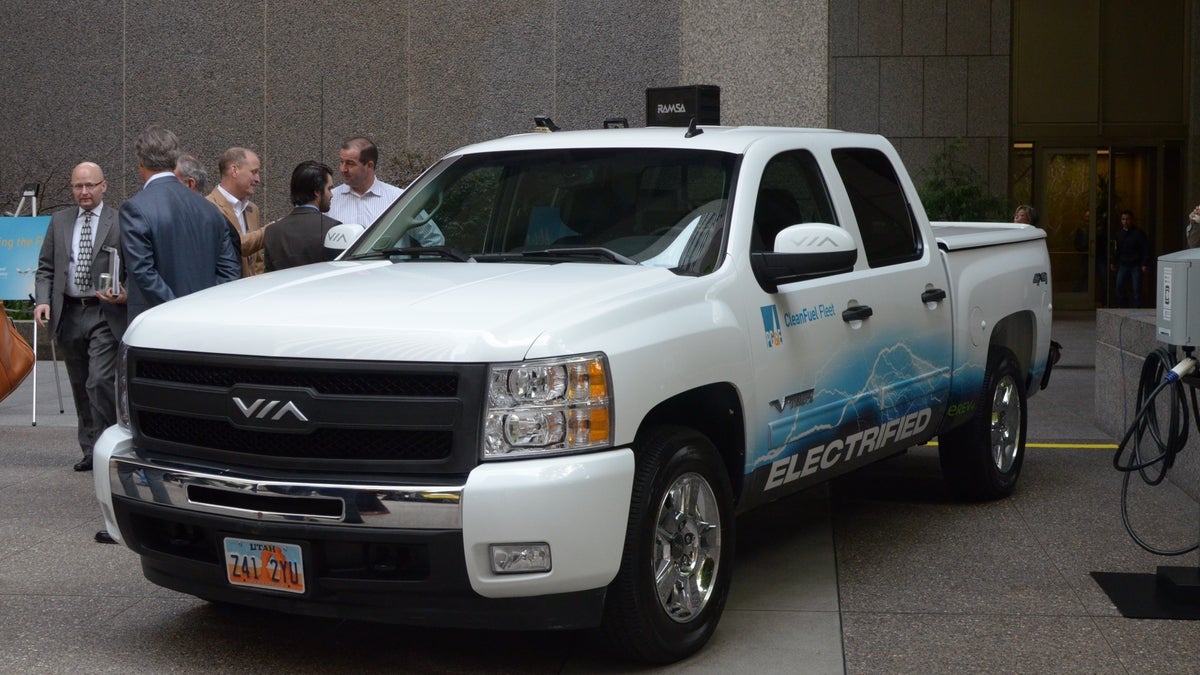VIA Motors, PG&E partner on the Chevy Volt of work trucks
They may not look like it, but pair of electrified pickup trucks showcased in San Francisco today have much more in common with the Chevrolet Volt than you may think.

San Francisco, Calif.--VIA Motors claimed a "first" today with the delivery of a pair of work trucks for use in California's Pacific Gas and Electric Company's (PG&E) fleet. These were no regular pickups, because although they are based on the Chevrolet Silverado, the trucks that VIA built are extended-range electric vehicles (eREV).
If you are familiar with the way the Chevrolet Volt works, you should have no trouble wrapping your head around the way VIA's eREV trucks function. For the first 40 miles of operation, the eREV truck is motivated solely by an electric motor and power from its battery pack. Once that range is depleted, a 4.6-liter V-6 engine turns over, replenishing the batteries and acting as a 15-kilowatt generator for the electric motor. This combination of power sources gives the eREV pickup a 400-mile cruising range.
"Electrifying one pickup truck is like taking two small cars off of the the road because of the reduction in gasoline consumption and emissions," claimed former Vice Chairman of General Motors Company, current VIA Motors Board Member, and self-described "father of the Chevy Volt" Bob Lutz at the press event that surrounded the delivery of the two eREV trucks to PG&E. Averaging the 40 miles of gasoline-free driving into an estimated 60 miles of daily driving, Lutz predicted that the VIA eREV trucks could "average about 100 mpg or more." That's a massive jump from a standard Silverado LT's estimated 13 city mpg, which backs up Lutz's assertion that large trucks and SUVs are even more ideally suited for electrification than smaller vehicles like the Volt.
An interesting benefit to being able to generate 15 kilowatts of electricity with the turn of a key is that the eREVs can each theoretically generate enough juice to temporarily power a small- to medium-size house. VIA showcased the vehicles' ability to power almost any tool that a PG&E technician might need at a work site, but PG&E hopes that this capacity can be increased in the future and used to shorten or eliminate planned maintenance outages or provide emergency power to businesses and residences. The idea is that you could send an electrified truck to a trouble spot, hook it up to the power infrastructure, and boost the electric grid until the issue has been resolved. If you've ever been stuck in an extended blackout, you'll have to admit that's a pretty cool feature.
PG&E will be testing the two VIA Motors eREV trucks as part of its fleet of work vehicles, with the possibility of adding more to its mix of alternative fuel vehicles in the future. PG&E Senior Vice President Greg Pruett asserted that at current fuel prices, each of the VIA trucks represents a potential $2,700 annual operating cost savings and that if the utility's entire 3,500-truck fleet were electrified tomorrow, $9.5 million dollars could be saved each year.

